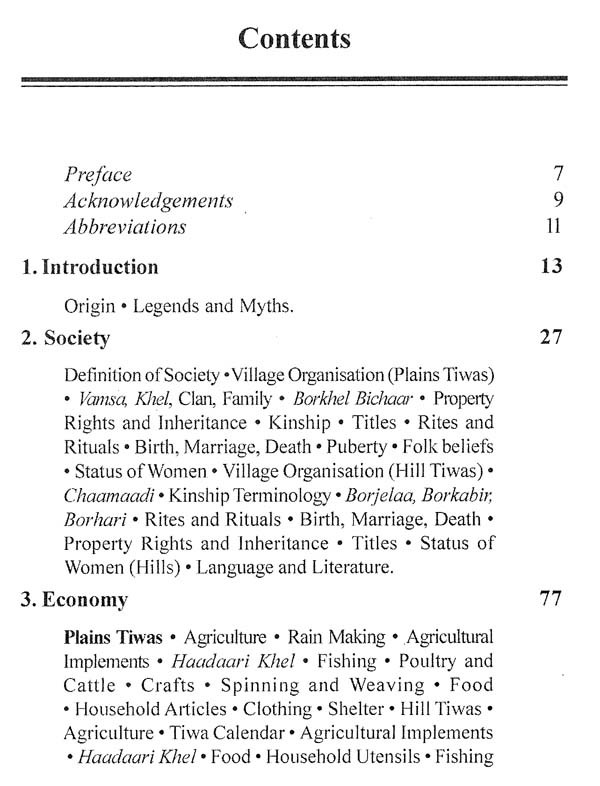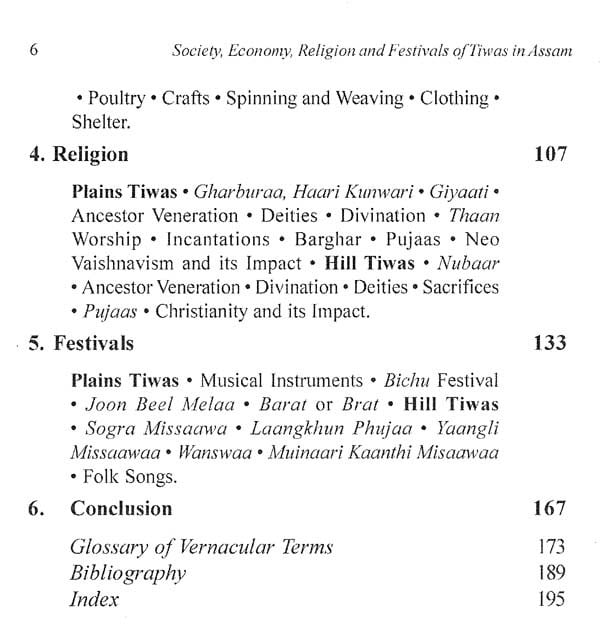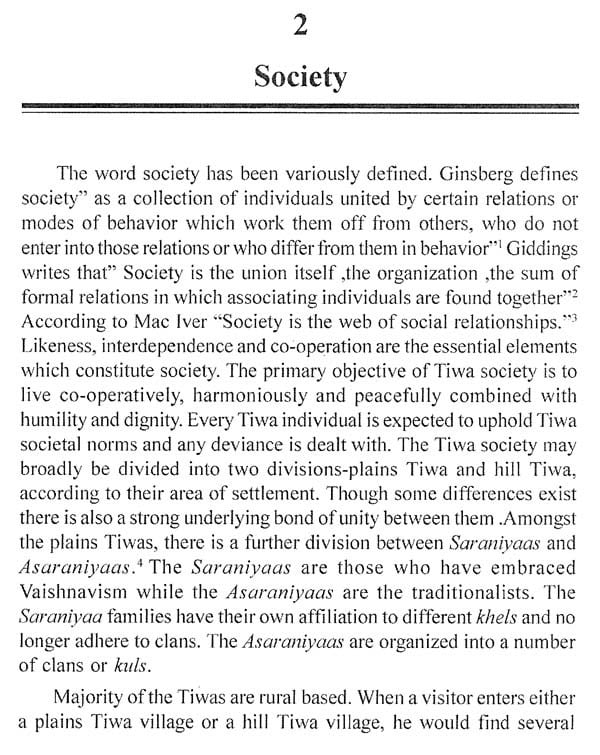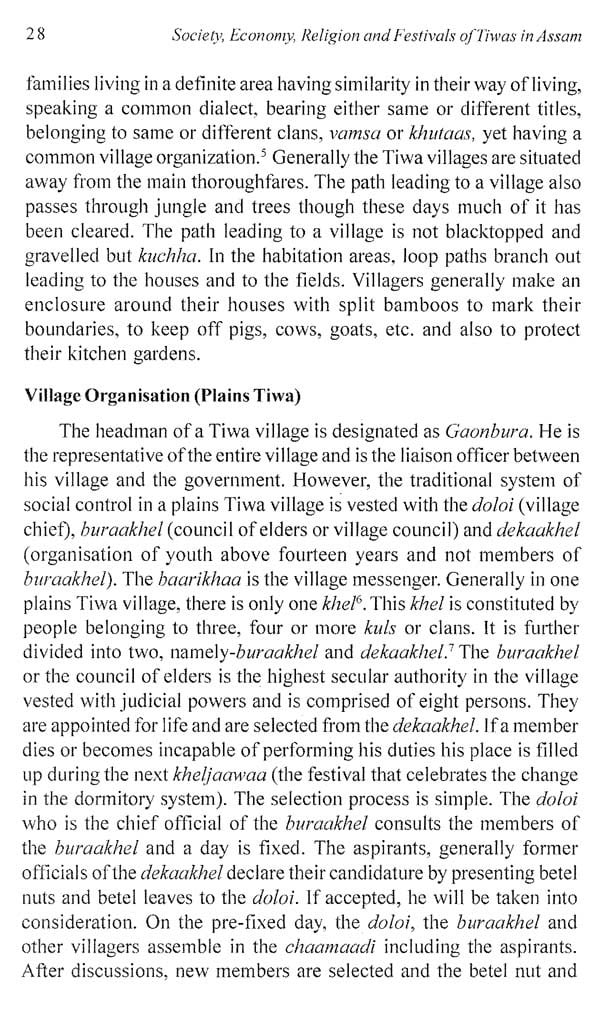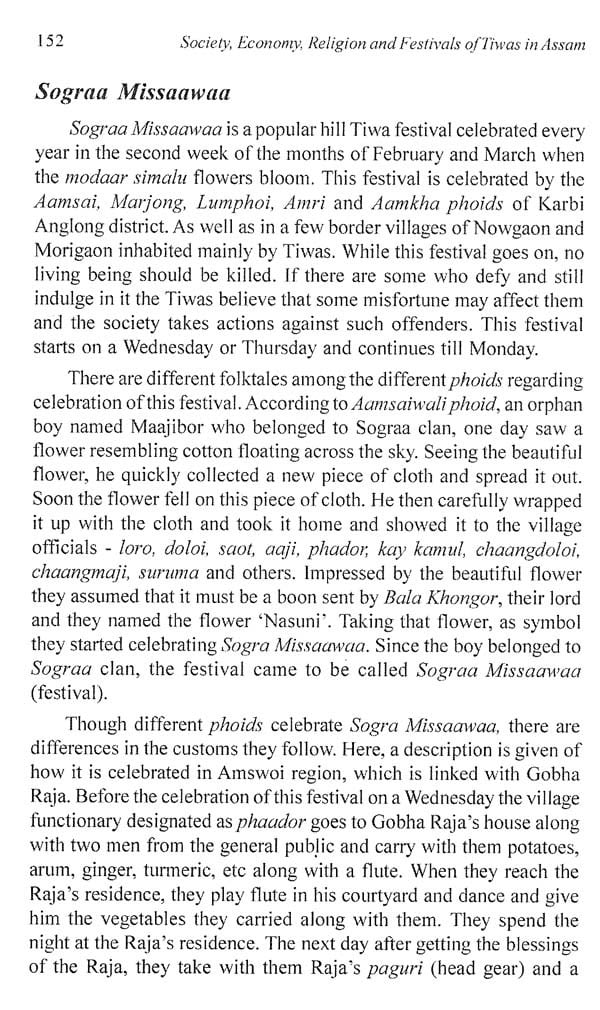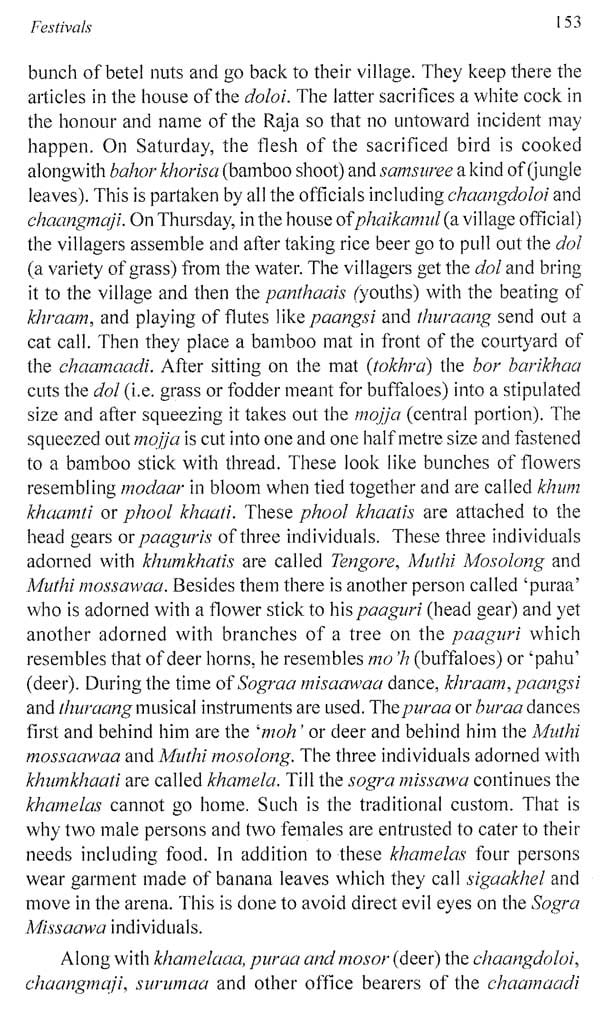
Society, Economy, Religion and Festivals of Tiwas in Assam
Book Specification
| Item Code: | AZH327 |
| Author: | Bandana Baruah |
| Publisher: | KALPAZ PUBLICATIONS |
| Language: | ENGLISH |
| Edition: | 2015 |
| ISBN: | 9788178359465 |
| Pages: | 209 |
| Cover: | HARDCOVER |
| Other Details | 9.00x6.00 inches |
| Weight | 406 gm |
Book Description
The book provides an insight into the way of life and thinking of both the groups of Tiwas-plains Tiwas as well as the Hill Tiwas. It is an attempt to understand their society, economy, religion and their festive occasions. It contains information on their village organisations, clans, property rights, inheritance, the rituals performed in various cycles of life-birth, marriage and death, youth dormitory, kinship relations, status of women, their various economic activities, their delicacies, the various deities they worship at different times of the year, ancestor veneration, divination, about how some of the hill Tiwas embraced Christianity, their different festivals.
Bandana Baruah was bom in Dibrugarh, Assam and is an Assamese. She did her schooling in St. Mary's Convent, Guwahati and then joined Cotton College from where she secured the seventh position with highest marks in Economics in PU Arts Examination in Gauhati University. After graduation from Indraprastha College, Delhi and post graduation from Delhi University she qualified in the UPSC Preliminary Examination. She obtained her Ph.D degree from Dibrugarh University. She joined Diphu Govt. College as a lecturer in History and was later transferred to Cotton College. She is presently serving as Associate Professor in the Department of History, Cotton College. She has presented a number of papers in national and international conferences. She is life member of Indian History Congress, Indian Social Science Congress, North East India History Association. She enjoys reading, writing and travelling. She has travelled extensively including USA, Europe, South East Asia and almost the whole in India.
The objective in writing this book is to present a descriptive account of Tiwa society, its traditions, customary laws and culture. Each segment of India's population is as important in that it is a constituent part of a larger whole. For the enactment of laws, holistic development and progress of the nation an in-depth knowledge of the cultures of each of the social groups is of prime importance. The author has made an attempt to pen down her observations from that perspective.
The study has been divided into six chapters. Chapter-1 which is the introduction one deals with the origin of the tribe, legends and myths associated with the names of the tribe, Tiwa and Lalung. Chapter 2 deals with Tiwa social life and traditional institutions, rituals pertaining to the different cycles of life-birth, marriage and death, status of women, dialect of the Tiwas and the differences in pronunciation between the plains Tiwas and hill Tiwas. Chapter 3 contains discussion on the economy of both the groups of Tiwas covering areas like agriculture, fishing, hunting, weaving and other crafts, livestock, trade and other economic activities. Chapter 4 deals with traditional religious beliefs and rites, acceptance of Neo Vaishnavism by some plains Tiwas and their assimilation in Assamese society. Alongside, it deals with the spread of Christianity among the hill Tiwas. Chapter 5 deals with the traditional musical instruments and dances as well as the folktales associated with the observance of the various Tiwa festivals. Chapter 6 summarises the earlier chapters. The findings may help policy planners and administrators in taking appropriate decisions and measures for socio-economic development of Tiwa inhabited areas, some of which are in deplorable condition. A number of words from the the Tiwa dialect have been used. But no dia critical marks could be used. How-ever to distinguish the pronunciation of (a) from (aa) single a is used for and double a is used for aa.
Situated between 28° and 24° North latitudes and 89° and 96° East longitudes at the foot of the Himalayas traversed by the rivers Brahmaputra and Barak along with their tributaries is the present state of Assam making it the gateway to the North-eastern region of India. P.C. Choudhury writes 'The land was known not only to the Buddhist world but also to the writers of the Epics, Puranas and other ancient works and in no small measure to the classical writers.' In the ancient period the land was referred to as Pragjyotisha, the interpretation of meaning given variously by various authors and by this name it was known in the two Epics, Ramayana and Mahabharata. Pragjyotishpura was the capital of Pragjyotisha kingdom.
In the Kalika Purana it has been mentioned that immediately after Naraka assumed kingship and was placed in charge of Goddess Kamakhya the name of the land was renamed as Kamarupa. The term Kamarupa symbolized a new cult and in exaltation of it the land itself was re-christened. 'The name Kamarupa according to the Puranic legends is associated with Kamadeva, the God of love. It is here that Kama was sent by the gods to put an end to Siva's mourning after the death of his consort and to awaken in him again the passion of creation. He was burnt to ashes by the angry glance of the great god, but later recovered his original form (rupa) (the name Kamarupa.rupa).³ Other interpretations also exist.
**Contents and Sample Pages**

